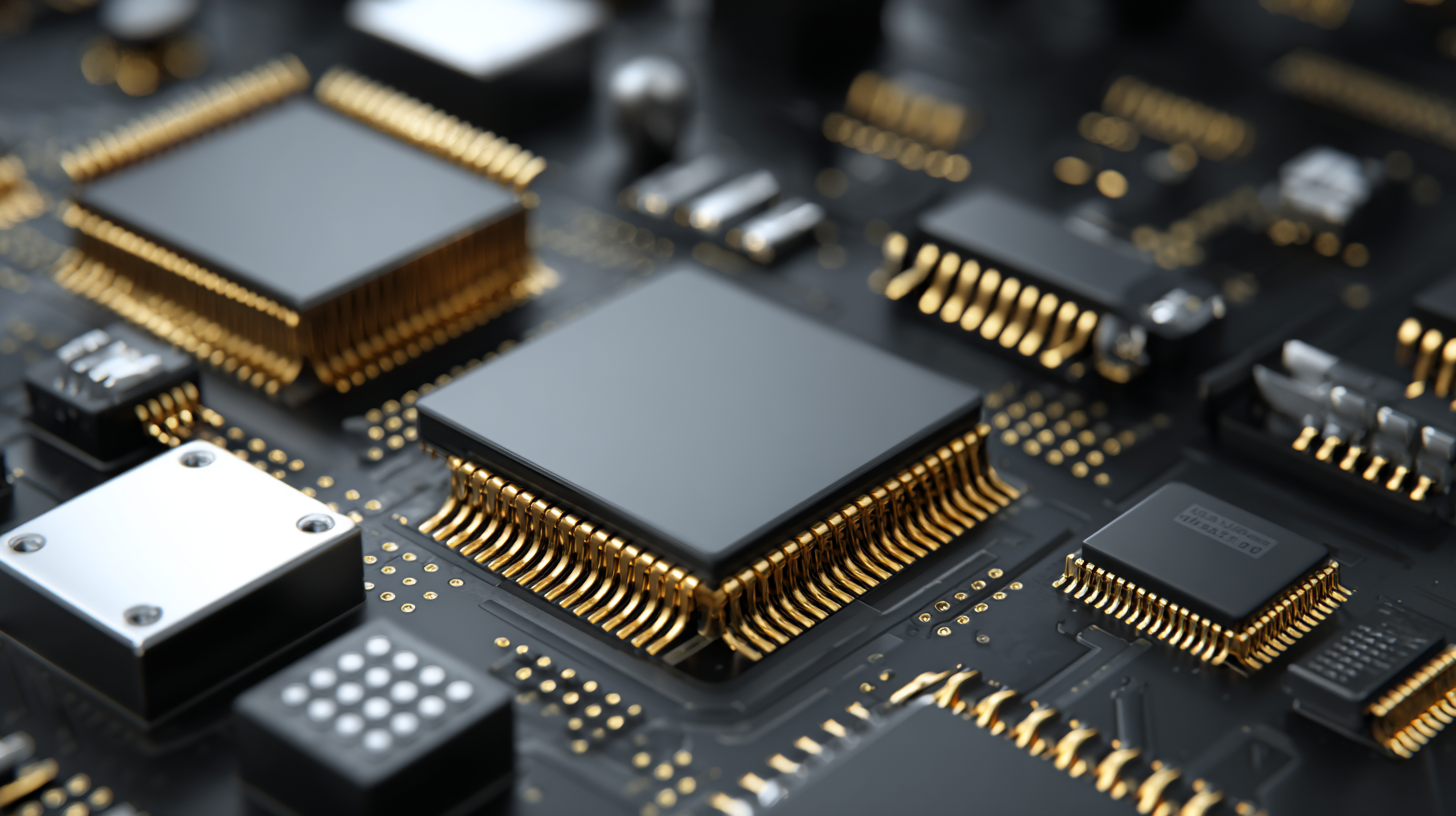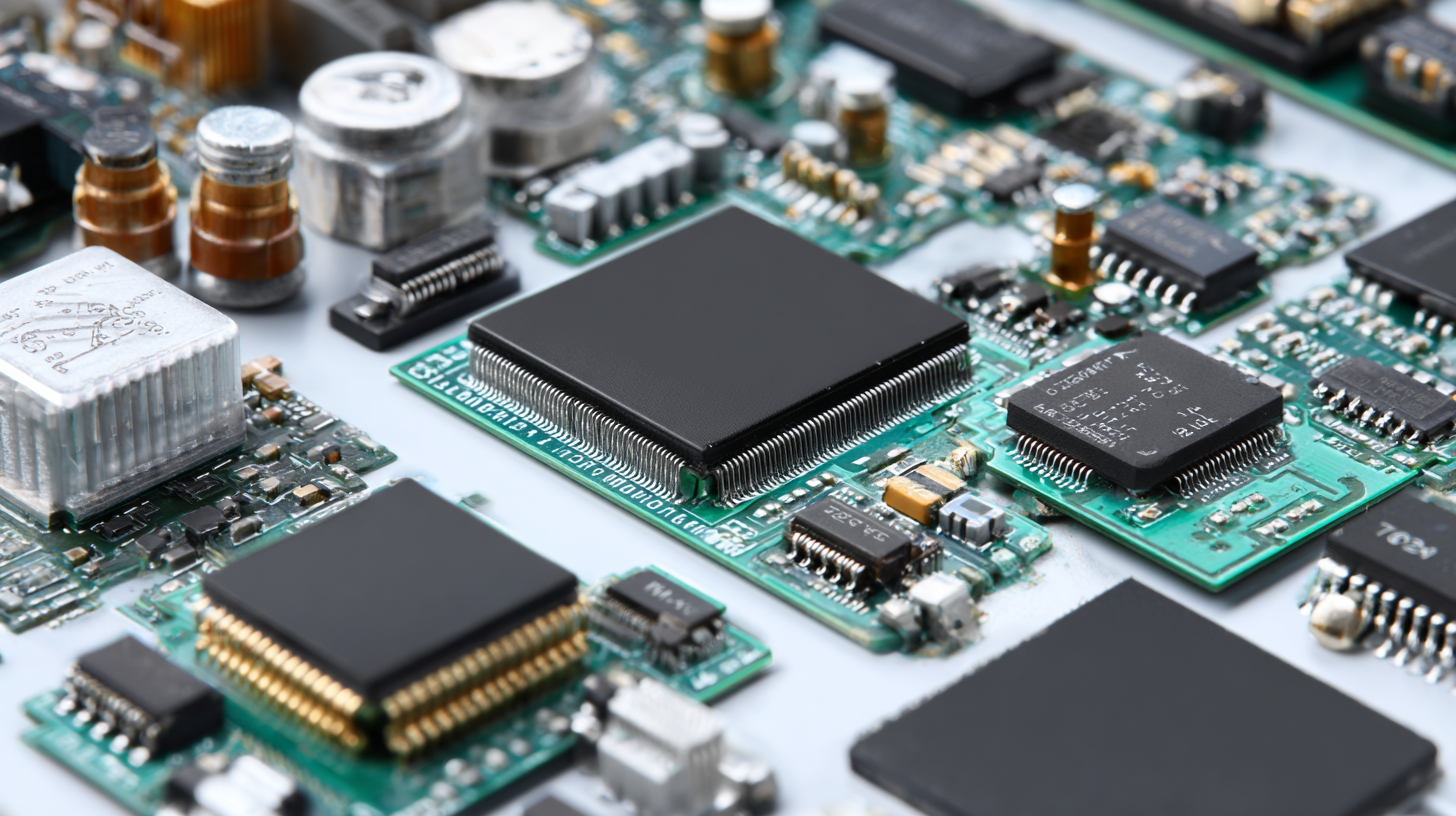News / Blog
2025 Guide: How to Make Wise Electronic Components Purchases for Your Projects
In the fast-evolving landscape of technology and innovation, making informed electronic components purchases has become crucial for both hobbyists and professionals alike. As we approach 2025, the myriad of choices available in the marketplace can be overwhelming, with each component claiming to be the best for various applications. Understanding the nuances of component specifications, compatibility, and performance is vital in order to bring your projects to life effectively and efficiently.
This guide aims to equip you with the knowledge and strategies needed for wise electronic components purchases. We will delve into essential factors that influence decision-making, such as identifying reliable suppliers, assessing quality standards, and recognizing the impact of emerging technologies on component availability. By following the insights outlined in this guide, you'll be better positioned to navigate the complexities of the market and make purchases that not only meet your project requirements but also align with your budget and long-term goals. Whether you are building a simple prototype or developing a complex system, this comprehensive approach to electronic components purchasing will empower you to achieve successful outcomes.

Understanding the Current Market Trends in Electronic Components for 2025
The electronic components market is poised for significant growth in 2025, with a projected increase across various sectors, including active, passive, and electromechanical components. Key market trends indicate a revival in global connector demand, particularly driven by the booming Asian market. The active components sector, including diodes, transistors, and integrated circuits, is expected to see a resurgence in consumer demand, while passive components such as resistors and capacitors remain essential in modern electronic applications.
Tips: When purchasing electronic components, always consider the latest market reports for insights on pricing and availability. Building a solid relationship with suppliers can lead to better procurement options, particularly as market conditions evolve. Additionally, staying updated on technology trends such as the rise of IoT and electric vehicles will help in making informed decisions that align with future projects.
The growing automotive electronics sector reflects a significant shift in consumer preferences and technological advancements. As vehicles become increasingly integrated with sophisticated electronic systems for safety, comfort, and entertainment, understanding the dynamics of electronic components will be crucial for any project aimed at the automotive market.
Key Factors to Consider When Sourcing Electronic Components for Projects
When sourcing electronic components for your projects, several key factors should guide your purchasing decisions. First and foremost, quality is paramount. Low-quality components can lead to project failures and increased costs down the line due to replacements or repairs. Always seek reputable suppliers and verify certifications of the components to ensure they meet industry standards.
Another critical factor is availability and lead time. In the fast-paced world of electronics, delays can hinder project timelines. It is essential to assess the stock levels of your chosen components and consider the supplier's ability to deliver within your required timeframe. Additionally, keep an eye on market trends that might affect component availability, such as global supply chain disruptions or demand fluctuations.
Lastly, consider the cost-effectiveness of your purchases. While it's tempting to opt for the cheapest components, they may not always represent the best value in the long run. Balance cost with quality and performance specifications to ensure you're making a wise investment that aligns with your project's requirements and overall budget. By focusing on these factors, you can make informed decisions that enhance the success of your electronic projects.
Evaluating Supplier Reliability: What Data to Analyze for Smart Purchases
When making wise electronic components purchases, evaluating supplier reliability is crucial. Analyze data related to the supplier's shipping history, customer service responsiveness, and return policies to ensure they meet high standards. Additionally, reviewing product quality metrics and warranty terms can provide insights into the reliability of the components you plan to use. It's essential to gather feedback from existing customers and assess any past issues reported, as this will contribute to a more informed purchasing decision.
Moreover, leveraging AI in procurement can significantly enhance the evaluation process. AI tools can efficiently analyze vast amounts of supplier data, enabling teams to identify potential risks and opportunities much faster—up to 80% quicker than traditional methods. By automating routine tasks and focusing on data analytics, procurement teams can better assess supplier capabilities and reliability, ensuring smarter purchases for projects. This data-driven approach not only streamlines the sourcing process but also supports strategic decision-making, ultimately leading to more reliable supplier partnerships.
Cost Management Strategies: How to Optimize Your Budget for Components
When managing the budget for electronic components in your projects, implementing cost management strategies is crucial for ensuring financial efficiency. According to a report by MarketsandMarkets, the global electronic components market is projected to reach $1 trillion by 2025, underscoring the need for manufacturers and hobbyists alike to make informed purchasing decisions. A key strategy is bulk buying; purchasing components in larger quantities can significantly reduce costs, with savings that can amount to up to 30% compared to buying smaller lots.
Additionally, leveraging tools like Bill of Materials (BOM) management software can streamline the procurement process and optimize cost efficiency. A recent study by TechValidate indicated that organizations using BOM management reported a 25% decrease in component sourcing costs, as the software facilitates better supplier comparisons and pricing negotiations. By integrating these strategies, project managers can not only stay within budget but also ensure that their project timelines are adhered to without incurring excess costs on components.

Future-Proofing Your Projects: Selecting Sustainable and Upgradeable Components
As we advance toward 2025, selecting sustainable and upgradeable electronic components for your projects becomes paramount. According to a report by MarketsandMarkets, the global green electronics market is anticipated to reach $1 trillion by 2025, reflecting the industry's shift towards sustainability. Choosing components that minimize environmental impact while maximizing performance not only ensures compliance with emerging regulations but also enhances the longevity of your projects.
Tip: When shopping for components, prioritize manufacturers that embrace eco-friendly practices and offer recyclable materials. This approach not only supports environmental stewardship but also aligns with the increasing demand for green technologies, as evidenced by a Deloitte study revealing that 70% of consumers are willing to pay more for sustainable products.

In addition, opting for upgradeable components can significantly extend the life cycle of your projects. With rapid advancements in technology, investing in modular designs enables easier integration of the latest components without overhauling your entire setup. Research from the MIT Technology Review suggests that modular electronic designs can reduce waste by up to 50%, making them an intelligent choice for future-proofing your creations.
Tip: Always check for compatibility and scalability in the components you select. Look for those equipped with the latest interfaces and protocols, ensuring that your projects can adapt to future innovations seamlessly.
Related Posts
-

Navigating Trends in Electronic Components at the 138th Canton Fair 2025 in China
-

How to Navigate the Best Electronic Components Website for Your Project Needs
-

Exploring Market Trends for Electronic Components at the 2025 Canton Fair in China
-

Exploring the Future of Electronic Components: Innovations and Insights from Leading Suppliers
-

Unlocking Innovation: How Electronic Components Drive the Future of Technology
-

Unlocking the Future: Innovative Electric Switches Transforming Smart Home Technology
